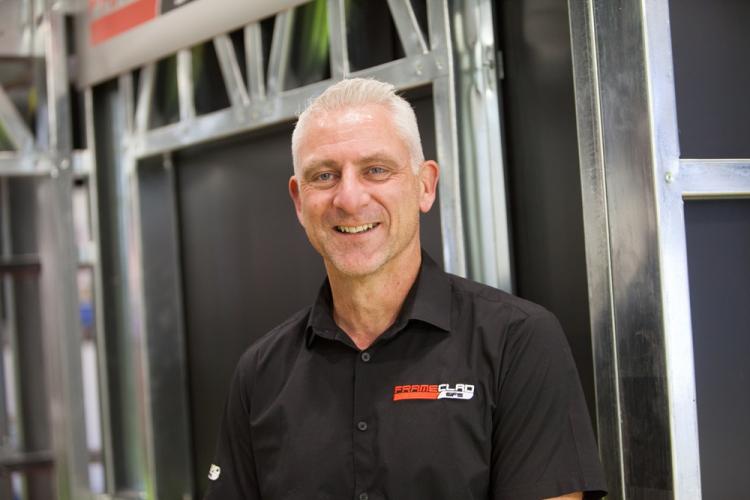
'Don't get me wrong, manufacturing and digital construction technology is massively important but with Frameclad, our strength lies in our people and the technical know-how within the team. From standard infill systems and off-the-shelf sections to vast medium rise bespoke light steel loadbearing developments - every project gets the same exceptional quality as standard, but it is our unrivalled customer service that sets us apart.
Transitioning from a merchant to a light steel manufacturer more than 15 years ago, we operate from two adjacent factories in Kingswinford with a combined area of 50,000sq ft of factory and office space. Substantial investment in six cold roll-forming machines, supported by customised Tekla software, produces one of the largest ranges of steel sections available in the UK today from a single manufacturer. But it's our investment in in-house expertise that drives our business forward and keeps us ahead of the curve.'
Design and Consultancy Solutions
In
spring 2022, Frameclad acquired Design and Consultancy Solutions (DACS) and has
a 12-strong team of designers and engineers based in our office in Teesside. Providing cost estimates within 10 days and detailed
designs within one week, our in-house team can make swift decisions and go that
extra mile to meet rapid turnaround times.
Design for Manufacture and Assembly (DfMA) is at the very centre of every offsite project, so we believe having total control over the manufacture and design elements is essential. Our design and engineering team, work in total synergy with our client's architects to ensure a cost effective, safe and sustainable solution – that will not only be robust and reliable but is also practical to install. One project that demonstrates this, is the Chocolate Factory.
Pick and mix steel solutions
The
development in London's Wood Green takes its name from the old Barratt & Co
confectionery factory that once stood on the site. We are responsible for
delivering the secondary structural framework, from design and engineering to
fabrication and on-site delivery. Block E2 is being transformed into 71
apartments and nine duplex houses, with the structural steel frame now
due for completion.
The Chocolate Factory development combines infill light steel for the building's lower floors and panelised loadbearing frames to construct the top storey on the sixth floor, with only minimal requirement for structural reinforcement.
When it came to detailing the loadbearing frames of the top floor, the large panel sizes presented us with a challenge from a logistics point of view. We overcame this by carefully considering the size and weight of the individual frames and how these could be loaded onto lorries and transported to site safely.
This is where our investment in Tekla Structures software came in. With our in-house skills supported by digital technology, the design and engineering team were able to identify the weights and centre of gravity for each component, carrying out checks and generating reports. This was a massive help in ensuring we didn't encounter any roadblocks further down the line, with potential problems being identified at an early stage.
Building Information Modelling (BIM) offers the ability to check, verify and compare information in a digital environment to ensure it is correct, before progressing to fabrication. For the light steel frames on the ground level to fifth floor, a clear benefit of the constructible modelling software was the ability to break down the individual steelwork using the user-defined attributes. This meant that we were able to automatically sort the steel by phase, floor and zone, with the ability to easily filter and sort the information needed at a specific time to generate fabrication reports, and efficiently phase manufacture and delivery of the steel framing solutions.
Once fabricated, each piece of steel also had a unique code stamped on it detailing the specific zone, floor, profile size and steel length. The site team could therefore easily identify the location for each piece of steel. All of this made for quicker and more organised fabrication, delivery and assembly processes and facilitating just-in time deliveries.
The framework for Block E2 is due for completion and is the result of another successful collaboration with up-and-coming contractor Formation Design & Build Ltd. The Chocolate Factory development as a whole is expected to be completed by early 2024.
For more information visit www.frameclad.com
Stay in touch: